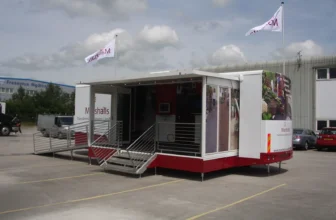
Running a business with fewer hands on deck can feel like holding everything together with duct tape and optimism.
Yet most organizations face this situation at some point, whether from sudden resignations, illness, hiring freezes, or seasonal surges. The challenge is not just surviving the shortfall but maintaining quality, morale, and momentum while doing it.
A smooth operation under staff pressure requires a mix of structure, communication, and strategic restraint. The goal is not to push your existing team harder but to make the system work smarter, even under temporary constraints.
Table of Contents
Reassess Priorities Before Acting

Source: zrgpartners.com
When staff levels drop, the first instinct is often to rush to fill the gap or redistribute tasks. That approach can backfire if you spread the remaining team too thin. Start instead with a brief but focused audit of what truly matters.
Also, partnering with Ned Capital Recruitment can help identify interim talent quickly, allowing you to reassess which functions truly need immediate coverage.
Identify Core Functions
Every company has essential and nonessential activities. In a staffing shortage, the essentials should take absolute priority.
| Category | Questions to Ask | Example |
| Revenue drivers | What directly brings in money or maintains client relationships? | Customer service, order fulfillment |
| Compliance | What must continue to stay legally or financially compliant? | Payroll, safety reporting |
| Operational backbone | What enables daily continuity? | IT support, internal communication tools |
Anything outside these categories can either pause, scale down, or be deferred. Revisit ongoing projects and campaigns to see which can wait.
Communicate the Reset
Once you’ve identified the essentials, share the plan clearly with the entire team. Explain what will pause and what remains mission-critical. People handle increased workload far better when they know the reasoning behind it and see that leadership has a plan.
Redesign Workflows to Fit Current Capacity

Source: pega.com
Workflows designed for a fully staffed team won’t fit a lean setup. Simplifying processes, removing redundancies, and automating repetitive work can buy back valuable time.
Streamline Repetitive Tasks
Make a list of every routine process that consumes employee hours each week. Many tasks can be shortened or restructured temporarily:
- Replace long approval chains with delegated decision authority.
- Batch similar tasks together, such as emails or reports, instead of handling them continuously throughout the day.
- Use templates for repetitive communication (client updates, invoices, reports).
- Automate basic reminders or recurring tasks through project management tools.
Even small time savings compound quickly when applied across multiple employees.
Standardize Where Possible
When people wear multiple hats, consistency becomes critical. Create or update brief process guides so others can step into key tasks without confusion.
A few well-organized checklists or step-by-step sheets can prevent errors and reduce onboarding time if temporary staff join later.
Reallocate Talent Based on Strengths

Source: shrm.org
A smaller team must operate with sharper alignment. Instead of focusing on titles, look at individual strengths and reassign responsibilities accordingly.
Match Tasks to Natural Skill Sets
If someone has strong organizational ability, give them coordination roles. If another person excels at client communication, let them handle more external-facing work.
Realignment not only improves performance but also gives people a sense of control and contribution during stressful times.
Identify Hidden Skills
Ask your team what other abilities they can bring forward temporarily. A marketing coordinator might know enough Excel to handle simple data tracking.
A warehouse supervisor might be skilled in basic procurement. Many employees have unused strengths that become valuable under strain.
Provide Flexible Role Boundaries
Rigid job descriptions limit problem-solving. Encourage a mindset where people can temporarily cross functional lines to keep key tasks moving. The goal isn’t permanent reassignment but adaptability.
Keep Morale Stable Without Overpromising
A short-staffed environment can quickly create fatigue and frustration. People often tolerate extra effort if they feel seen and supported, but morale drops sharply when communication breaks down or expectations feel unrealistic.
Acknowledge the Pressure
Leadership should openly recognize that the situation is tough. Avoid sugarcoating. Employees can handle the truth better than vague reassurance. Honest acknowledgment builds credibility and lowers resentment.
Maintain Predictable Routines
Predictability gives structure. Keep regular check-ins, even if shorter, and ensure weekly updates remain consistent. Familiar rhythms help counteract the instability that comes with staff shortages.
Encourage Micro-Breaks and Downtime
Short breaks during the day protect focus and reduce burnout risk. Even ten-minute pauses between high-intensity tasks make a measurable difference in energy and decision quality. Set the tone by modeling that behavior at the leadership level.
Leverage Temporary and External Support
Sometimes, keeping operations steady means seeking reinforcement from outside sources. The key is to use external help strategically rather than reactively.
Consider Short-Term Contractors
Hiring freelancers or temporary staff can stabilize critical workflows without long-term commitment. Use them for defined, outcome-based assignments: data entry, customer follow-ups, marketing design, or technical support.
When bringing in contractors, provide clear documentation and short onboarding sessions. Avoid overloading them with complex context. Give specific, measurable objectives tied to deadlines.
Partner with Outsourcing Services

Source: optibpo.com
For routine but essential functions like payroll, HR compliance, or IT maintenance, outsourcing can relieve your core staff of administrative load. Choose partners with established reliability and clear communication standards.
Tap Into Existing Networks
Former employees, interns, or retired staff sometimes welcome short-term return opportunities. They already know your company culture and systems, which cuts ramp-up time drastically.
Use Technology to Reduce Friction
When time and manpower are limited, digital tools can become your silent partners. The challenge is not to adopt every trending app but to identify what directly reduces manual effort.
Project Management Systems
Centralized platforms like Asana, Trello, or Monday.com can help track tasks, deadlines, and dependencies. Use simple boards or lists to visualize what’s pending, in progress, and complete. Clarity saves meetings and prevents work duplication.
Communication Channels
A lean team cannot afford confusion. Consolidate internal communication into one or two main channels – Slack for quick updates, email for formal communication. Make sure everyone knows where to find information without searching across multiple platforms.
Automation Tools
Use automation for recurring administrative duties:
- Scheduling meetings and reminders
- Sending invoices or receipts
- Updating CRM entries
- Following up on late payments
Automation doesn’t replace people but ensures that the people you have can focus on higher-value work.
Adjust Performance Metrics Temporarily
During a staff shortage, traditional productivity benchmarks can become unrealistic. Adjusting them doesn’t mean lowering standards; it’s about focusing on what matters most right now.
Shift From Quantity to Quality
Reduce emphasis on output volume and instead reward precision, client satisfaction, or completion of mission-critical projects. Short-term focus on high-impact work prevents burnout and protects the company’s reputation.
Redefine Deadlines Transparently
If timelines must stretch, communicate the adjustments clearly to both internal and external stakeholders. Transparency prevents misunderstandings and reinforces reliability even in constrained circumstances.
Track Workload Data
Use basic workload tracking tools to see how time is actually spent. Data helps you identify bottlenecks or unnecessary administrative weight that can be removed. It also provides evidence for future resource requests when the hiring cycle resumes.
Protect Company Culture During Stress

Source: linkedin.com
When short-staffed, culture can erode quietly as people focus solely on survival. Yet culture is what holds operations together when structure thins out. Maintaining it requires deliberate attention.
Keep Rituals Alive
Even brief team rituals—morning huddles, Friday wrap-ups, or informal check-ins—help preserve cohesion. It’s better to shorten such rituals than to cancel them entirely.
Recognize Effort Publicly
Acknowledgment matters more than ever during lean times. Simple recognition in meetings or internal channels keeps morale from slipping. It signals that effort is visible, even when results take longer to show.
Foster Two-Way Feedback
Encourage employees to raise concerns about workload or process issues. Create one reliable feedback path, whether through a shared form, manager check-ins, or anonymous submissions. Acting on feedback quickly reinforces trust.
Anticipate and Prevent Burnout
Burnout is the silent operational killer during staff shortages. It doesn’t happen overnight; it builds quietly until productivity and morale collapse simultaneously.
Spot the Early Signs
Managers should monitor for indicators like:
- Increased absenteeism
- Declining attention to detail
- Irritability or emotional fatigue
- Withdrawal from team interaction
Early awareness allows for workload redistribution before serious damage occurs.
Rotate Responsibilities
When possible, rotate high-stress tasks among multiple employees. Even a one-week break from demanding duties can reset energy and focus.
Offer Small Flexibility Perks
Flexibility doesn’t always mean hybrid work or extended leave. It can be:
- Adjusted start times
- Shorter meeting schedules
- Reduced administrative reporting
Small concessions reduce stress while maintaining accountability.
Strengthen Cross-Training for Future Resilience

Source: blog.hogantaylor.com
Staff shortages reveal weak points in skill distribution. Use this time to build a more flexible structure for the future.
Document Key Processes
Have each employee document critical steps for their main responsibilities. Even brief notes on logins, file locations, or contacts can prevent paralysis if someone else must fill in later.
Pair Employees for Knowledge Transfer
Assign short weekly sessions where teammates exchange insights about their roles. Over time, the group gains broader operational awareness and reduces dependency on any single person.
Create Quick Reference Repositories
Centralize instructions, templates, and policies in an easily accessible digital space. A shared folder or internal wiki is often enough. The goal is to ensure continuity regardless of individual availability.
Communicate Externally with Care
Clients and partners will notice slower response times or delayed projects. Proactive communication can prevent misunderstandings and protect trust.
Set Clear Expectations Early
If deadlines need adjustment, notify clients before they ask. Most people appreciate honesty over vague updates. Frame the message around commitment to quality rather than limitation.
Maintain a Single Point of Contact
Assign one consistent representative for each client or vendor to avoid confusion. Even if that person cannot answer every question immediately, the continuity builds confidence.
Use Status Reports Strategically
Send concise progress summaries at regular intervals. Transparency reduces the number of follow-up inquiries and gives clients reassurance that work is moving forward.
Plan for Recovery Once Staffing Improves
A short-staffed period should not end with relief alone. Use the experience to refine your structure for long-term strength.
Review What Worked and What Broke
Once normal staffing resumes, gather feedback from all levels. Identify which emergency measures improved efficiency and which caused friction. Some temporary solutions may deserve to stay.
Build a Contingency Framework
Create a written action plan for future shortages, including:
- Priority task lists
- Communication templates
- Temporary vendor contacts
- Cross-training roles
A documented framework transforms a reactive response into a prepared system.
Rebalance Workload Gradually
Avoid dumping accumulated tasks on newly hired staff immediately. Instead, phase responsibilities over a few weeks to ensure smooth integration and maintain the morale of long-term employees who carried the load.
Summary

Source: recruiter.com
Running a company with fewer people than you need is difficult, but it’s not unmanageable. The key lies in clarity, structure, and adaptability.
By stripping operations down to their essentials, optimizing workflows, and keeping communication honest, you can maintain both performance and morale until reinforcements arrive. Every period of constraint exposes inefficiencies and hidden strengths.
The organizations that treat it as a chance to recalibrate often emerge stronger, more resilient, and more cohesive than before.







